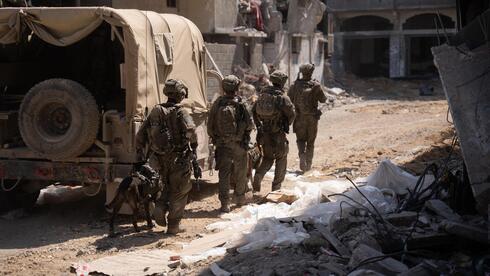By Yoav Zitun
Copyright ynetnews

About half of Gaza City’s residents have fled, including 200,000 people in the past three days since Israeli forces began a ground operation there, security officials estimated Friday. The assessment contrasts with Prime Minister Benjamin Netanyahu’s description of Gaza City as “Hamas’ last stronghold.” Military officials said that in practice, there are no longer fixed strongholds in the conventional sense. Wesam Afifa, the former executive director of Hamas’s Al Aqsa TV, told The New York Times that “What remains today are small, mobile resistance cells fighting in guerrilla style.” According to security officials, Hamas has shifted to a hit-and-run strategy on the battlefield, avoiding direct confrontations with Israeli troops, who hold overwhelming military advantages. Terrorists have planted roadside bombs, hidden explosives in residential buildings and in some cases managed to hurl them into military vehicles, officials said, citing several recent incidents. Since the start of the ground operation in Gaza City, 98th and 162nd Division troops have been taking up controlling positions around the city as part of the maneuver. IDF Chief of Staff Lt. Gen. Eyal Zamir has instructed forces to advance using a “layer-peeling” method that prioritizes soldier safety over speed. In a statement on Friday, the IDF said: “Troops from the 162nd Division continue operating in Gaza City. The troops are eliminating terrorists in rapid targeting engagements using tank fire, armed UAVs, and airstrikes, dismantling terrorist infrastructure, and locating weapons in the area.” Thursday marked the third day of the ground phase of Operation Gideon’s Chariots II. The IDF reported fewer encounters than the day before, when Givati Brigade troops and the 401st Armored Brigade killed terrorists using sniper fire. An unnamed regional intelligence official told The New York Times that as Israel pushes deeper into Gaza City, most of Hamas’ remaining fighters are expected to disperse to other areas. The official said Hamas forces are currently concentrated in Gaza City, Deir al-Balah in central Gaza and the coastal area of Al-Mawasi. Israel may eventually seek to take control of those areas as well, the official added, but security sources told the newspaper that dismantling Hamas in a way that could be considered total could take years of fighting. ‘As much as Hamas has been weakened, they’re still the only game in town’ Despite its losses, Hamas has neither collapsed nor been decisively defeated militarily or organizationally nearly two years after the Oct. 7 massacre, Israeli officials acknowledged this week. They emphasized that the goal of Operation Gideon’s Chariots II is to dismantle Hamas’ Gaza City Brigade — not to destroy the terrorist group entirely. Speaking from Gaza, IDF Chief Zamir told troops that “the city constitutes vital ground for Hamas.” He said their mission was “to defeat Hamas’ Gaza City Brigade. The maneuver in the city is a significant step toward carrying out the most important moral mission — bringing all the hostages home and dismantling the military and governing capabilities of Hamas.” Netanyahu has repeatedly claimed that victory over Hamas is “within reach,” most recently before the Gaza City offensive. He made similar statements more than a year ago ahead of Israel’s entry into Rafah. The exact number of fighters remaining in Gaza is unclear. Israeli estimates suggest about 2,500 terrorists are still in Gaza City, now facing encirclement. The army believes Hamas’ top priority is to capture an Israeli soldier during the opening days of the maneuver, in hopes of boosting morale among its fighters. Many others are fleeing south alongside civilians toward the displaced persons camps in Al-Mawasi. As Israeli forces advanced further into Gaza City on Thursday to complete its encirclement, Hamas’ armed wing threatened it had prepared “an army of suicide bombers and thousands of ambushes” awaiting soldiers. Even Palestinian analysts, however, argued the group was exaggerating. Mohammed al-Astal, an analyst based in southern Gaza, said Hamas was projecting strength “to pressure Israel into accepting a deal to end the war.” He added that Israel, for its part, also overstates Hamas’ remaining power to justify prolonging the campaign and the displacement of civilians from the city. Emsat Mansour, described by The New York Times as a “political analyst” and known to be close to Hamas leader Yehya Sinwar — with whom he shared time in Israeli prison — admitted that “When we talk about Hamas, we’re really talking about the remnants of Hamas. But as much as they’ve been weakened, they’re still the only game in town.”



